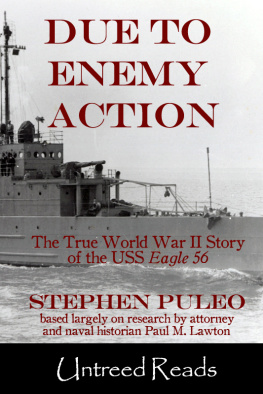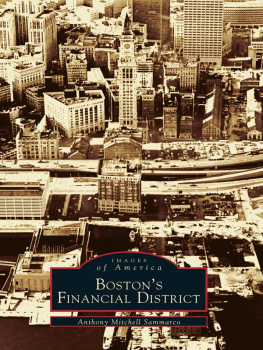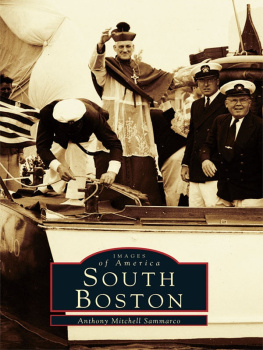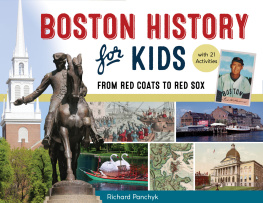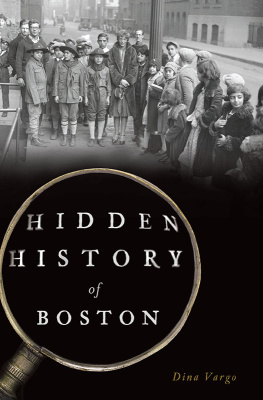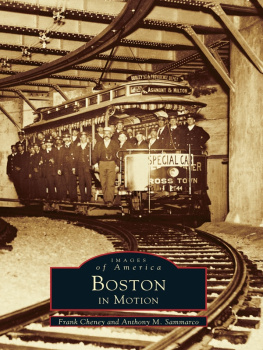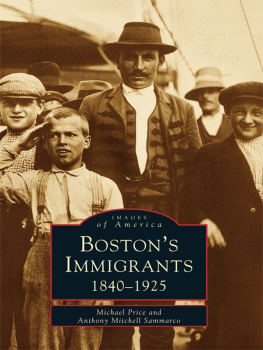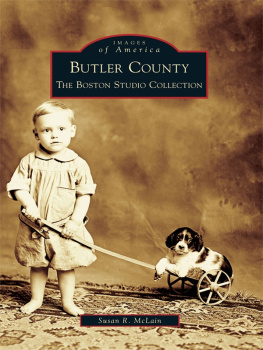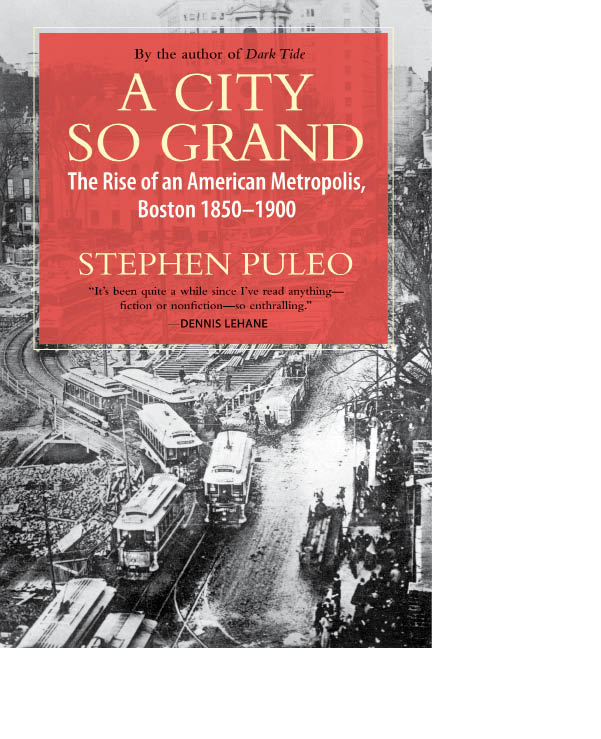Also by Stephen Puleo
The Boston Italians: A Story of Pride, Perseverance and Paesani , from the Years of the Great Immigration to the Present Day
Due to Enemy Action: The True World War II Story of the USS Eagle 56
Dark Tide: The Great Boston Molasses Flood of 1919
A City So Grand
The Rise of an American Metropolis,
Boston 18501900
Stephen Puleo
Beacon Press, Boston
For Kate
All my tomorrows belong to you
Contents
Authors Note
Never underestimate the value of a good walk.
As inarguable as the advice might be from a health and fitness perspective, I discovered that it also applies to the researching and writing of narrative history.
A simple stroll I took through a relatively small portion of downtown Boston helped me draw the connections that led to this book, although, unbeknownst to me at the time, my trip occurred in reverse chronological order.
It began at the Park Street subway station, where, after disembarking from my train, I spent a few moments examining the large, grainy photos chronicling the construction of Americas first subway, in 1897. These photos give me pause anytime Im at Park Street, for their historical significance, yes, but more for the ethnic rumblings they elicit. Ive written extensively about Italian immigration to Boston, and many Italian immigrants worked on the subway; at least one picture shows a group of laborers, some clearly of Italian heritage, posing for the photographer more than a century ago.
Next, I emerged from the Park Street station onto the Common, and climbed the hill toward the State House. I stopped, as I often do, at the impressive memorial dedicated to Colonel Robert Gould Shaw and the famous Fifty-fourth Massachusetts, the celebrated colored regiment that fought for the Union in the Civil War, suffering enormous casualties in the summer of 1863 during a courageous but unsuccessful assault on Fort Wagner in South Carolina. Shaw lost his life in the advance, and almost half the men in his regiment were either killed or badly wounded before the Fifty-fourth retreated under relentless and blistering Confederate fire. Their story, part of Bostons immense contribution to the Northern cause, is recounted in the stirring 1989 film Glory .
From the memorial, I made my way down Beacon Street, cut through the Public Garden, and walked onto Commonwealth Avenue in the Back Bay, perhaps Bostons most prestigious neighborhood today. But in the early 1850s, this area had been totally submerged under a filthy body of water, a despicable eyesore as one report labeled it. It required the countrys most ambitious landfill and development project of the nineteenth centurymore than thirty years of planning and constructionto transform Back Bay into one of Americas most fashionable and desirable residential addresses.
When I returned home I thought more about these three locations and their common thread. All marked milestone events that had occurred in the second half of the nineteenth century, and had required vision, daring, and an almost indomitable will to succeed. All represented, in one way or another, Bostons burgeoning influence as a national and world leader.
Could these three locations and the events they represented anchor a book about Bostons growth and emergence in the second half of the nineteenth century? Were there other significant developments during this period that contributed to the transformation of the city?
After considerable research, I answered yes to both questions; without doubt, the years between 1850 and 1900 marked Bostons metamorphosis from a large and insulated town to a thriving metropolis that achieved national and international prominence in politics, medicine, education, science, social activism, literature, commerce, and transportation. Notwithstanding her indisputable and widely heralded leadership role in the Revolution, or the vast influence of her literary community in the 1830s and 1840s, no other period comes close to 18501900 in establishing and solidifying Boston as one of the worlds most influential cities.
These were, in so many ways, her glory years.
The half century began with the abolitionist movement. Bostons contributions to the antislavery cause are almost unparalleled and laid the groundwork for its unwavering resolve to preserve the Union during the Civil Warand the eventual participation of black troops, including the Massachusetts Fifty-fourth, in the Union Army. Abolitionist Thomas Wentworth Higginson commanded the Unions first company of black troops, which paved the way for the Fifty-fourths historic sacrifice. The ferocity of Bostons abolitionism was triggered by the strengthening of the Fugitive Slave Law in 1850 and the failure of abolitionists to prevent federal troops from returning escaped slave Thomas Sims to captivity the following year. The years preceding the Civil War saw watershed moments across the nation, but especially in Boston or involving Bostonians. What better place, then, to start the story?
The Tremont Street subway opening in 1897, Americas first, was justifiably hailed as one of the countrys great transportation and technological marvels, and thus provides the logical bookend to the abolitionist movement in defining Bostons half century of progress and leadership.
And the Back Bay project, an engineering and city-planning feat in its own right, mirrored Bostons own growth in stature as the second half of the century progressed.
But there was so much more.
Bostons contributions to the Union cause during the Civil War electrified the North, including its enthusiastic and immediate response to President Abraham Lincolns call for troops; its annexation of the formerly independent towns of Roxbury, West Roxbury, Dorchester, and Charlestown dramatically increased its physical size and allowed its growing population to spread; and its absorption of thousands of Irish immigrants during the great famine forever changed the citys demographic, political, and social face. A resilient Boston rebuilt its downtown core after the Great Fire of 1872, and a proud Boston celebrated the first transmission of speech over the telephone in 1876. And prior to the subway, Boston repeatedly defined itself as a transportation powerhouse throughout this fifty-year span: with its Great Railroad Jubilee of 1851, and entrepreneur Henry Whitneys bold conversion of the citys trolley system from horse-drawn cars to electric vehicles in the early 1890s. Both are chronicled in A City So Grand.
The second half of the nineteenth century is, quite simply, a breathtaking period in Bostons history. While the frustrations of our modern era often make the notion of accomplishing great things appear overwhelming or even impossible, Boston distinguished itself between 1850 and 1900 by proving it could take on the most arduous of challenges with repeated, and often resounding, success.
The story of Bostons emergence as a world-class city during this fifty-year period has largely gone untold up to now. Various authors and historians have tackled, quite ably, subjects such as the abolitionist movement, or the emergence of the Irish, or the Back Bay project, or Alexander Graham Bells invention of the telephone. Others have focused on politics or the excesses of the Gilded Age. But the full tapestry of Bostons influence during this period has remained unwoven until now. The historian who comes closest to defining the significance of the period is Harvards Sam B. Warner Jr., in Streetcar Suburbs, his analytical study of Bostons physical and population growth. He wrote:
No period in Bostons history was more dynamic than the prosperous years of the second half of the nineteenth century... In 1850 Boston was something familiar to Western history and manageable by its traditions... By 1900 it had become... something entirely new, an industrial and suburban metropolis.


